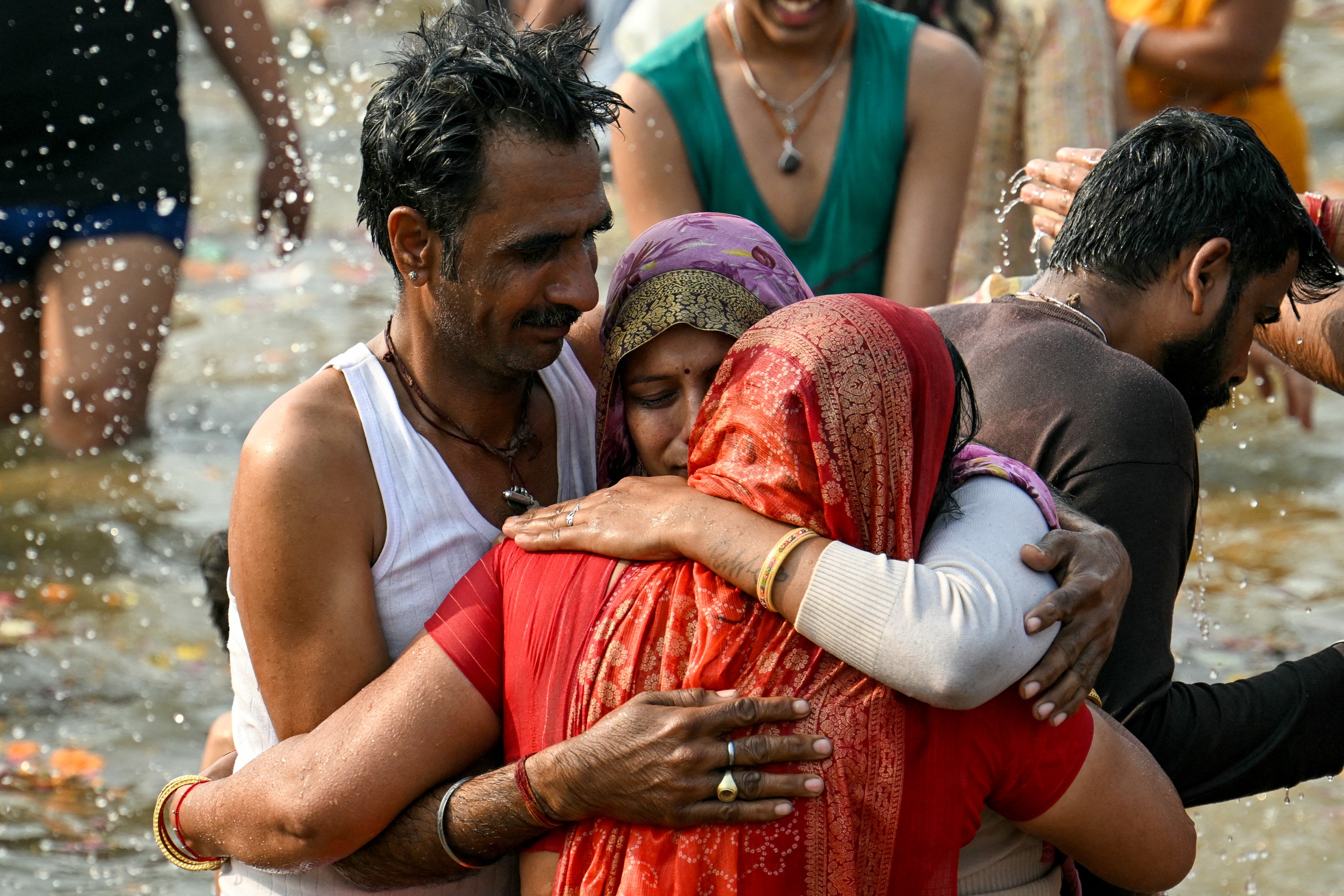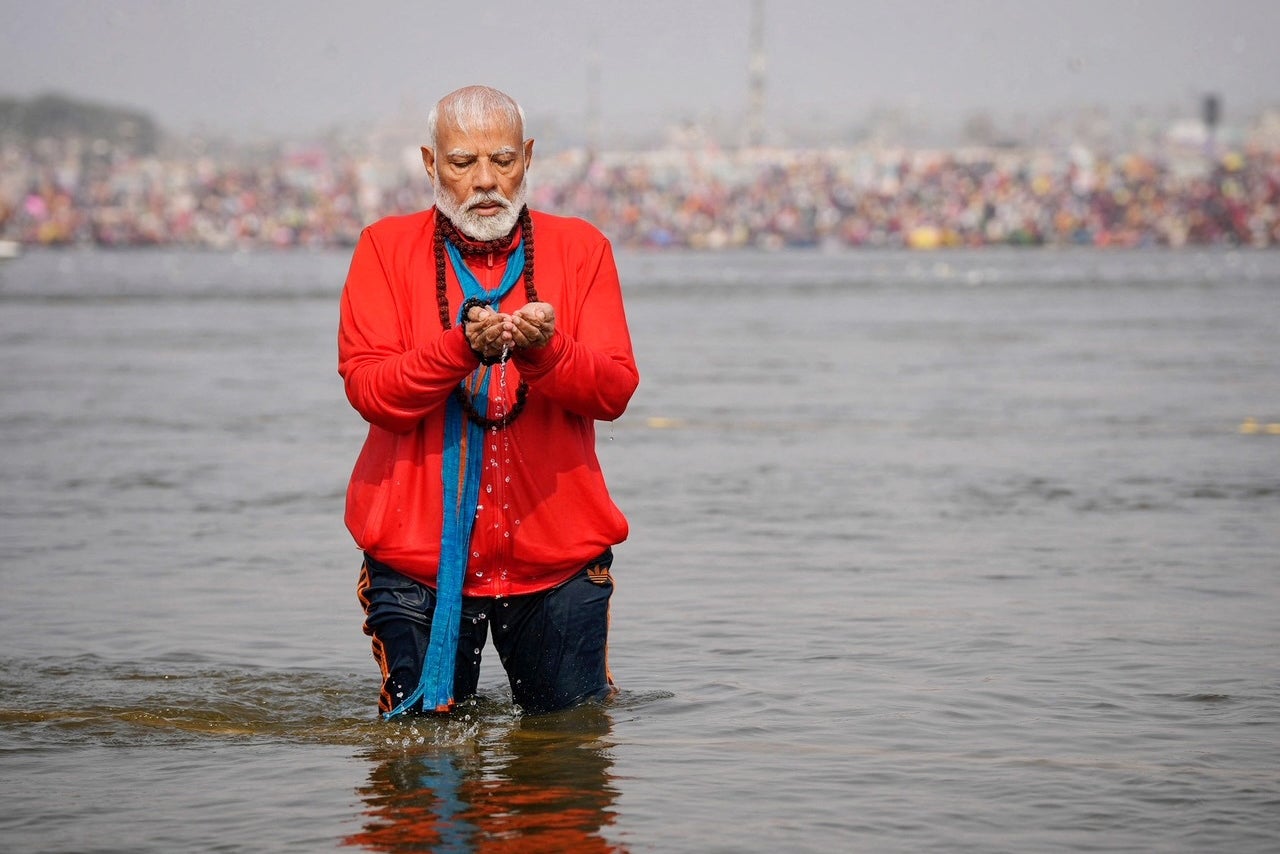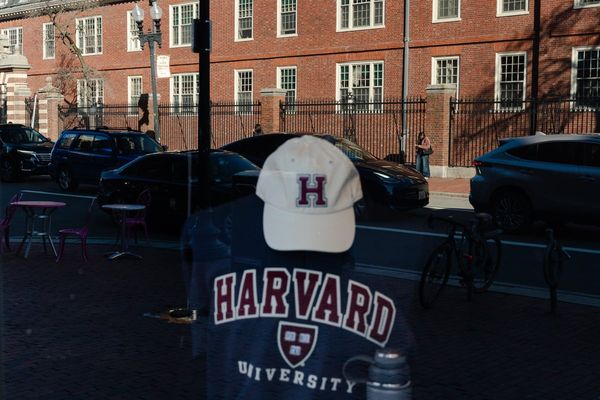India’s environmental authorities have raised concerns over dangerously high levels of faecal bacteria in the Ganges river at Prayagraj, particularly during the Maha Kumbh Mela – a major religious gathering that attracts millions of people for ritual bathing.
A recent report by the Central Pollution Control Board (CPCB), a statutory organisation under India’s Ministry of Environment, Forest and Climate Change, found that the river’s water quality did not meet safe bathing standards, especially on key ritual days when large crowds entered the water.
While sewage treatment plants were functioning, the sheer number of people using the river led to a sharp rise in contamination, the report said.
The Maha Kumbh Mela is one of Hinduism’s holiest festivals, held once every 12 years at Prayagraj in India’s northern state of Uttar Pradesh where the Ganga, the Yamuna, and the mythical Saraswati rivers meet. The confluence of the rivers is called Sangam and a “holy dip” in the waters is regarded as one of the festival’s main rituals.
During the ongoing Maha Kumbh Mela, a report by the CPCB showed that faecal coliform bacteria levels in the river exceed the safe limit of 2,500 units per 100 millilitres, posing a serious health risk to those entering the water.
As per the latest recorded data on 4 February, faecal coliform levels in the Ganges surged after a major bathing event at the Maha Kumbh Mela, reaching 11,000 units per 100 millilitres near Shastri Bridge and 7,900 units per 100 millilitres at Sangam – far above the safe limit of 2,500 units per 100 millilitres.
What is faecal coliform bacteria?
Faecal coliform bacteria are naturally present in the intestines of humans and warm-blooded animals. Their presence in water is a warning sign of possible contamination, as they indicate that the water may contain harmful pathogens such as viruses, parasites, and other disease-causing bacteria originating from human or animal waste.
Water quality assessments frequently test for faecal coliform bacteria to determine whether the water is safe for drinking, swimming, bathing, or other recreational uses.
The CPCB report which analysed Ganges water said: “The river water quality was not conforming to the primary water quality for bathing with respect to faecal coliform (FC) at all the monitored locations on various occasions.”

It added: “A large number of people bathe in the river at Prayagraj during the Mahakumbh Mela, including on auspicious bathing days, which eventually leads to an increase in faecal concentration.”
How dangerous is faecal coliform bacteria?
Recent reports indicate that faecal coliform levels in the Ganga River are far beyond the safe limit of 2,500 MPN/100ml (Most Probable Number per 100 millilitres), making the water hazardous for those who come into contact with it.
With millions of people gathering in Prayagraj for religious rituals, the risk of waterborne diseases has risen sharply. The situation is worsened by the discharge of untreated sewage from nearby areas, further contaminating the river.
Exposure to this polluted water can cause gastrointestinal infections, skin rashes, eye irritation, and more serious illnesses like typhoid and hepatitis A. Inhaling water droplets containing bacteria can also lead to respiratory infections, particularly in vulnerable groups such as children and the elderly.

Beyond the immediate health risks for pilgrims, this contamination threatens local communities that depend on the river for drinking, cooking, and daily activities.
Long-term exposure to faecal bacteria in the water has also been linked to an increased risk of infections and even certain cancers, such as bladder and colon cancer.
According to KnowYourH2O, a US-based programme working on promoting the use of safe drinking water, bathing in waters with high levels of faecal coliform bacteria “increases the chance of developing illness (fever, nausea, or stomach cramps) from pathogens entering the body through the mouth, nose, ears, or cuts in the skin”.
How have authorities responded to the report?
On Wednesday, Uttar Pradesh chief minister Yogi Adityanath, however, dismissed the report that stated that water at multiple locations during the Maha Kumbh Mela contained faecal bacteria levels exceeding the safe limit for bathing.
He claimed that the water at the Sangam, the confluence of the Ganga, Yamuna, and the mythical Saraswati, was “fit for drinking”, according to NDTV.







